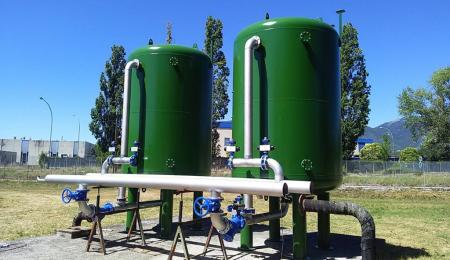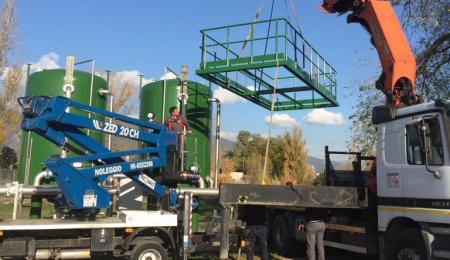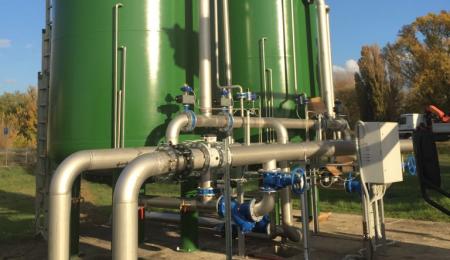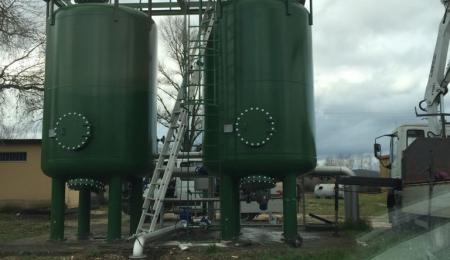Case study / Water treatment plants
Water for human consumption or industrial use, may contain undesired chemical elements, such as excessive chlorine, chloro-amines, solvents, oils, pesticides and substances that cause bad odours or taste.
The activated carbon filters perform a chemical-physical absorbent action on the elements treated and due to their characteristics are also used in wastewater for COD reduction, colour, etc.
How activated carbon filtration plants work
Active carbons can be of vegetable or mineral nature and are present in the form of granules and are contained inside a cylinder where the water to be treated flows.
Their absorption capacity depends on substances that are treated and once exhausted must be replaced, but occasionally the bed is backwashed to prevent the formation of clots that can effect the correct functioning of the filter.
The filters are essentially made up of tanks containing activated carbon and a group of valves that allow normal as well as backwashing operations. The operation and backwashing of the activated carbon are automatically managed by a control panel and suitable sized valves; in some cases the filters may be manual and these operations must be carried out manually.







